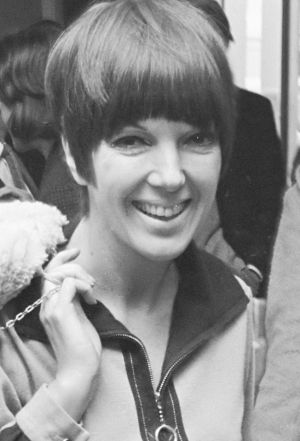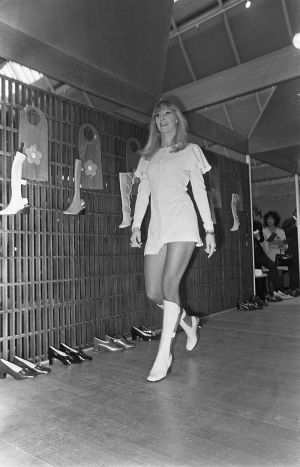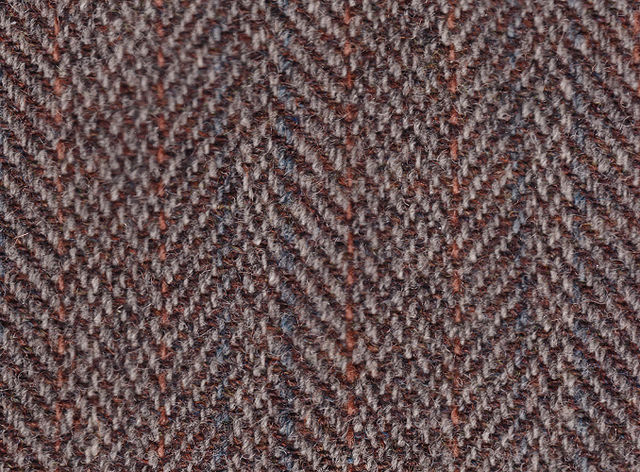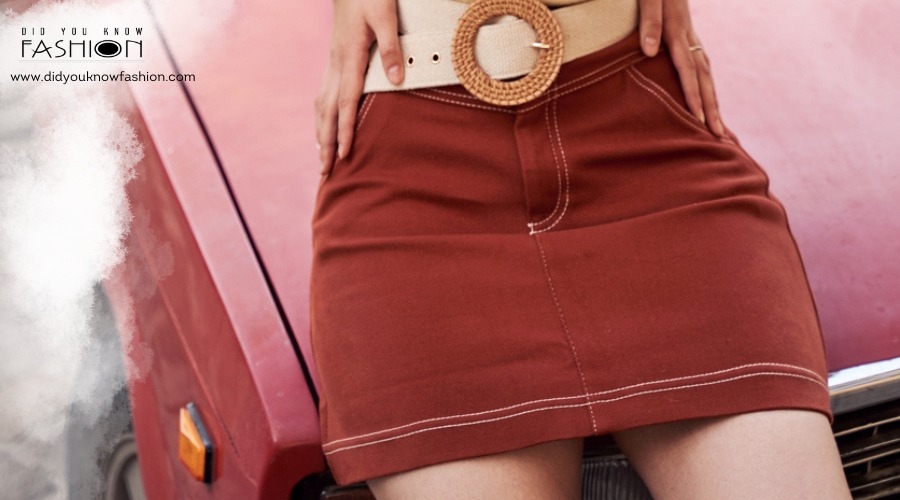The 1960s heralded a seismic shift in the world of fashion, marked by a spirit of rebellion and liberation that challenged the norms of previous decades. The miniskirt became an emblematic symbol of this transformation, embodying the youthful energy and growing feminist sentiments of the era. Its hemline rose in defiance of tradition, capturing the zeitgeist of the 1960s as it became a popular trend among young women seeking to express their individuality and newfound social freedoms.
The creation and subsequent rise to fame of the miniskirt is often credited to designers like Mary Quant and André Courrèges, who sought to fashion a look that resonated with the dynamic and progressive attitudes of young people. As the miniskirt gained prominence, it was more than just apparel; it represented a cultural movement, with the fashion industry and media quickly capitalizing on its popularity. The iconic garment was featured on magazine covers, in films, and became a staple in the wardrobes of women around the world.
In the landscape of 1960s fashion, the miniskirt was not isolated in its influence. It was part of a broader shift towards more casual, colorful, and expressive clothing styles that challenged conservative dress codes. The trend was more than fabric-deep; it was interconnected with the period’s music, social changes, and an emerging sense of autonomy among the youth. This era’s legacy, with the miniskirt at its forefront, continues to resonate in contemporary fashion, symbolizing an enduring spirit of independence and a break from the past.
The Emergence of the Miniskirt
In the 1960s, the miniskirt emerged as a cultural and fashion phenomenon, symbolizing youthful rebellion and the era’s zest for innovation. This daring garment transformed women’s fashion and became an iconic representation of the times.
Mary Quant’s Revolutionary Design

Mary Quant, a London-based designer, is credited with the creation of the miniskirt in the early 1960s. Quant’s designs deviated from the conventional attire of the era, introducing a hemline that was significantly shorter than the norm. Her boutique, Bazaar, located on the King’s Road in London, became a nexus for modern youth fashion. Quant named the miniskirt after her favorite car, the Mini; it was a garment that embodied the energy and spirit of London’s burgeoning youth-oriented scene.
Influence of Youth Culture on Fashion

The rise of the miniskirt was inextricably linked to the burgeoning youth culture of the 1960s. Young people were looking to distinguish themselves from the older generation, and this desire for individuality and independence was reflected in their bold fashion choices. The era was also marked by the vibrant sounds of rock ‘n’ roll, which influenced the fashion scene with its rebellious and carefree attitude. Designers responded to this cultural shift by creating styles that resonated with the young, energetic population, and the miniskirt soon became a staple.
Global Spread and Adaptation
The popularity of the miniskirt was not confined to London; it spread rapidly across the globe as a symbol of modernity and freedom. Designers and fashion houses worldwide adapted the concept of the miniskirt, incorporating it into diverse styles and variations. Its global appeal was aided by media coverage and the rapid spread of new fashion ideas through magazines and television, making it an international trend.
The miniskirt became a defining fashion element of the 1960s, reflecting broader social changes and the powerful influence of youth culture on the fashion industry.
Cultural Impact and Fashion Icons
The miniskirt of the 1960s was more than fashion; it was a cultural emblem. It signified youth liberation and became iconic through the influence of high-profile figures and the media.
Twiggy and Jean Shrimpton
Lesley Lawson, widely known as Twiggy, and Jean Shrimpton were pivotal in popularizing the miniskirt. Twiggy’s waif-like figure and childlike demeanor accentuated the youth-centric style of the era. Shrimpton made waves when she appeared at the 1965 Melbourne Cup in a miniskirt, pushing fashion boundaries and drawing significant media attention.
Women’s Liberation Movement
The miniskirt also became a symbol within the Women’s Liberation Movement. Its adoption marked a shift in female autonomy over their bodies and choice of dress, standing against societal norms. Clothing was utilized as a tool for expression and protest during an era where women fought for equality.
Icons of the Era and Media Influence
High-profile women like Diana Rigg, who starred in The Avengers, and public figures like Jackie Kennedy were instrumental in cementing the miniskirt as a fashionable staple. The Beatles‘ progressive style and music further complemented the era’s forward-thinking approach. Hollywood and television amplified these trends, making the miniskirt a ubiquitous symbol of 1960s fashion rebellion and innovation.
Design Elements and Variations
The 1960s mini skirt revolutionized fashion with its daring hemlines and fresh design approach. Focused on youthful exuberance and modernity, the mini skirt featured a range of shapes, textures, and patterns that captured the spirit of the decade.
Shapes and Silhouettes
The mini skirt typically maintained a shape that was simple and straight, cutting a neat line above the knee. It showcased hemlines that were daringly high, often several inches above the knee, bringing a bold new look to women’s fashion. The silhouette was a reflection of the decade’s infatuation with youthfulness and minimalism.
Material and Texture

Fabrics used in the making of mini skirts varied widely, exhibiting a range of textures:
- Tweed: A popular choice that gave the mini skirt a textured, durable quality.
- Corduroy: Often selected for its ribbed texture and warmth, suitable for cooler climates.
- PVC: Synonymous with the ’60s futuristic aesthetic, PVC added a glossy, sleek edge to the mini skirt.
Patterning and Colors
Designs ventured beyond solid colors to incorporate bold patterns and prints, making the mini skirt a canvas for artistic expression. Common motifs included:
- Checks: A classic design that offered a geometric contrast to the mini skirt’s simple shape.
- Dots: Playful and eye-catching, dots added a lively, whimsical touch.
- Plaid: Plaid patterns provided a traditional twist on the mini skirt, creating a balance between the new and the known.
With these variations in shape, material, and pattern, the mini skirt of the 1960s became not just a garment, but a cultural symbol of change and freedom in fashion.
Fashion Industry’s Response
The 1960s mini skirt not only symbolized a shift in cultural norms but also marked a pivotal moment in fashion history as designer responses ranged from enthusiastic adaptation to inspirational creation of new garments.
High Fashion’s Embrace
In Paris, the fashion capital, high fashion designers such as André Courrèges were pivotal in embracing the mini skirt, with his designs embodying the spirit of the era’s space-age aesthetic. Influential magazines like Vogue helped popularize these daring hemlines, featuring mini skirts prominently within its glossy pages, signaling a high-fashion endorsement.
The Influence on Other Garments
The trend rapidly trickled down to a variety of other garments. Mini dresses and pinafore dresses emerged, adapting the mini’s daring length, while traditional midi and pencil skirts were shortened to match the modern vibe. Designers across fashion hubs such as New York and London integrated these updates, with labels like Biba becoming synonymous with the youthful look.
Expansion into International Markets
The mini skirt phenomenon wasn’t confined to the confines of European flair. Its acceptance saw international markets, including the United States and beyond, take to the raised hemlines. Not only did this create a global style language, but it also meant iconic fashion houses like Balenciaga had to reckon with and incorporate the mini into their collections to stay current and globally competitive.
The Evolution of the Miniskirt
The miniskirt became the epitome of 1960s fashion, embodying the era’s spirit of freedom and rebellion. It was a stark departure from the conservative styles of previous decades, signaling a significant cultural shift.
Later Adaptations and Styles
In the latter part of the 1960s, mini dress adaptations surfaced, often made with shiny lurex, fine-tuned for the disco era. The 1970s saw the trend evolve into pleated skirts and sweater dresses, with hemlines dropping to midi and eventually to maxi length as part of the bohemian aesthetic. Through the 1980s and 1990s, the miniskirt continued to resurface in various forms, often as part of retro revivals.
- 1980s: Bold patterns and colors
- 1990s: Black mini dresses paired with tights or leggings
- 2000s: Denim miniskirts, a staple for casual wear
- 2010s: Mix of throwback styles from previous decades
Legacy and Enduring Popularity
The miniskirt remains a symbol of youth and rebellion. Its legacy is tied to the broader social changes of the 1960s, including the advent of the pill and the consequent shake-up of gender norms. The miniskirt’s popularity endures as it continuously adapts to the current trends, ensuring that it remains relevant in the fashion world.
- Social Impact: Embraced as a statement of independence
- Fashion Icon: Continues to inspire designers
- Modern Usage: Ranges from professional to casual settings
Despite the fluctuating lengths of skirts through the decades, the miniskirt stands resilient, maintaining its symbolic status while seamlessly integrating into contemporary fashion cycles.
Associated Accessories and Hairstyles
In the 1960s, the fashion landscape saw an integration of distinctive accessories and hairstyles that were as key to the mini skirt ensembles as the skirts themselves. This integration defined an iconic era of self-expression and fashion revolution.
Complementary Footwear and Hosiery
Footwear: The mini skirt often sat just above the knee, necessitating the rise in popularity of boots that were either flat or with a low heel, exemplified by go-go boots. These knee-high boots not only complemented the shortness of skirts but also added a flare of futuristic appeal that was in vogue during the ’60s.
Tights: To pair with mini skirts and dresses, colorful and patterned tights became fashionable. They provided modesty, warmth, and a cohesive appearance, allowing women to maintain a certain level of comfort while sporting the bold, short skirts.
Hairstyles and Makeup Trends

Vidal Sassoon’s 5-Point Cut: The hairstyles of the 1960s were a perfect match to the fashion trends of the time, with Vidal Sassoon’s five-point cut standing out. It was a geometric, sleek, and low-maintenance hairstyle that embodied the modernity of the era.
Makeup: Makeup trends favored bold, dramatic eyes with pale lips. Eyeliner and eyeshadow in shades like blue and green were commonly used, and false eyelashes added to the dramatic flair.
Popular Accessories of the Decade
Belts and Scarves: Mini dresses were often accessorized with wide belts cinched at the waist or patterned scarves that added a pop of color. The belts helped create a more defined silhouette, which was essential for the simple cut of many minis.
Jewelry: Statement jewelry pieces, such as large rings, bangles, and geometric earrings, complemented the bold lines and shapes of the clothing. Designers like John Bates emphasized innovation and boldness both in their clothing and in the accessories that accompanied their garments.
Denim: Although denim was not as ubiquitous as tights or bold jewelry, it started making an appearance in the form of jackets and vests that could be mixed and matched with mini skirts and other staples of ’60s fashion.
Blouses and Shirts: Fitted blouses and shirts, often with high collars or turtlenecks, were popular choices to wear with mini skirts, maintaining the simplicity and clean lines associated with the era’s aesthetic.

